Quiet, Please! How to Cut Noise Pollution at Home
I work from home, and apparently I am in good, and growing, company. There are 3.1 million of us in the United States who now work from home, and this number is increasing. Do you know what we do for at least a part of our day? Get distracted by a noise: music blaring, a bus passing or a neighbor’s conversation about what’s for dinner.
These sounds seep into a room through those pathways known as windows and doors, as well as floors, walls and ceilings. To decrease sound you must obstruct or dampen the sound wave. The good news is that many newly constructed homes and multiunit buildings have noise-blocking requirements. Just like there’s a fire code, there’s a noise code, says San Francisco Bay Area architect Andy Morrall.
But let’s say you don’t fit into this new-build category, or your landlord has somehow managed to escape city ordinances. There are two main ways to create more quiet at home: 1. adding surfaces that absorb the sound, or reverberation, before it gets to your ears, and 2. blocking it entirely.
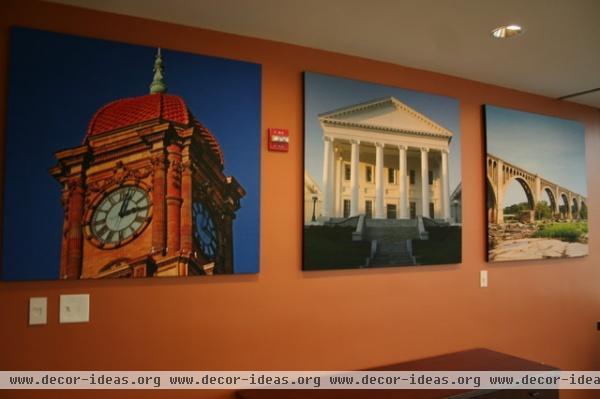
Sound Absorbers for the Home
Blocking sound and absorbing sound are two different things, says Matthew Boughan of Acoustical Solutions in Richmond, Virginia. Absorbing it is easier. Some ideas to try:
Add 1-inch-thick acoustic panels. Sheetrock, a terrible absorber of sound, can be the culprit of that tinnyness you hear when talking on the phone. To remedy this, cover your walls with materials that have a noise reduction rating (called NRC, or noise reduction coefficient) of 0.85 or above, Boughan says. He recommends a 1-inch-thick fabric-wrapped acoustical wall panel.
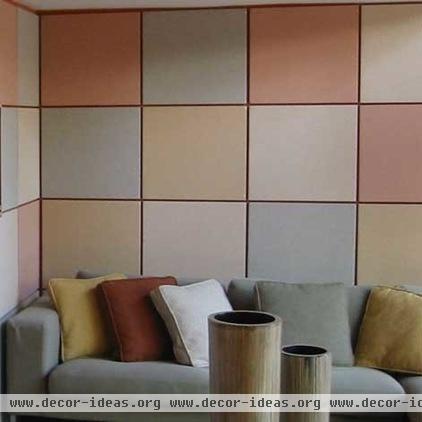
Acoustic panels come in a range of colors and fabric styles and can be designed into your interior decor. Installation is slightly more involved than hanging a picture, Boughan says.
You want to spread out the absorption evenly among all walls and even place panels on the ceiling. Panels can even be turned into a gallery wall.
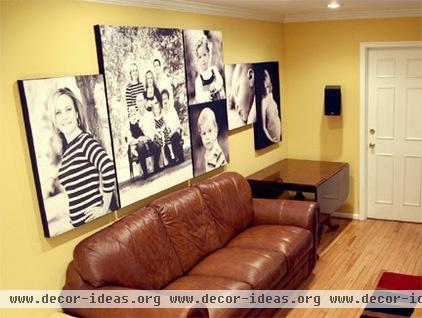
Acoustical Solutions can duplicate a high-res digital photo on the fabric, so it looks like artwork. Digital photo reproduction costs $30 per square foot, rounded up to the nearest even increment. (For example, a 3- by 4-foot panel costs the same as one that's 4 by 4 feet square).
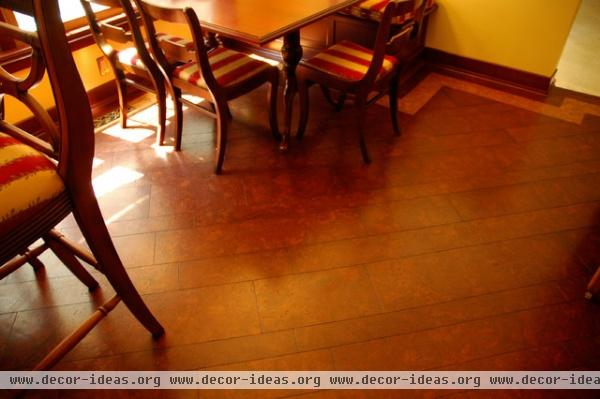
Hardwood-Style Cork Flooring - $7.00 » Cork flooring. If your floors are concrete or cork (shown here), congratulations. Those are among the best materials for sound absorption.
Carpets, rugs and padding. If your floors are sporting hardwood, tiles or linoleum on subfloor concrete, you may want to try rugs or carpet coupled with a sound-absorbing padding. Cut-pile carpeting, with its fuzzy top, tested better at absorbing sound than loop pile. Also helpful is a foam-rubber backing, according to the Carpet and Rug Institute. Acoustical Solutions offers a padding called Iso-Step for $2.25 to $3.75 per square foot.
Floating hardwood. There are other options for flooring, such as floating hardwood, Morrall says. This type of flooring installation includes a gap between the subfloor and your actual floors, which effectively dampens sound.
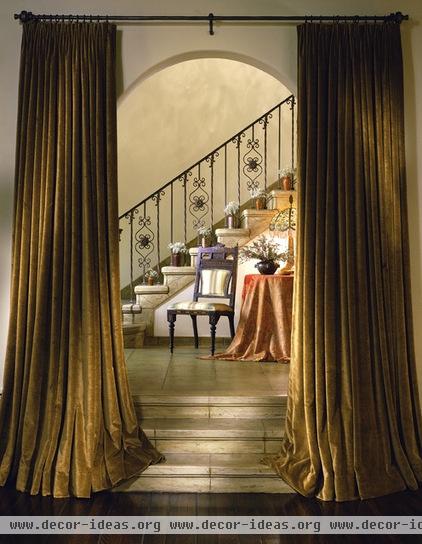
Draperies. Draperies can be both sound absorbing and sound blocking. For sound absorption, look for heavy materials such as velvets and wools. And if there's a mass-loaded vinyl layer, even better.
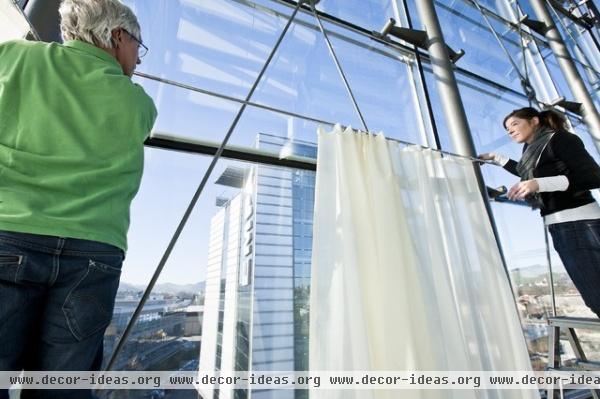
A recent breakthrough in sound-absorbing draperies came from EMPA, a lab in Switzerland, and Swiss textile designer Annette Douglas. They are gauzy, allowing in some natural light, but made of a modified polyester designed to absorb sound. They come in three different designs (Carmen, Formoza and Marmara) that range from $72 to $123 per linear yard, and are available through U.S. distributor Wolf Gordon.
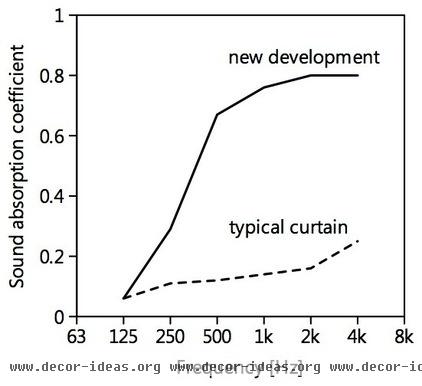
EMPA tested the curtains for sound absorption with good results.
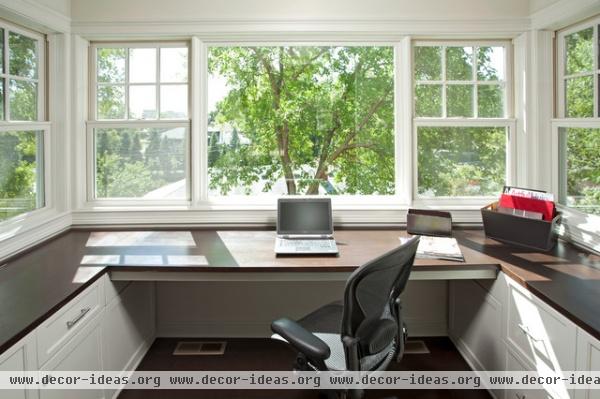
Now for the More Difficult Problem of Sound Blocking
“If sound is pouring through the window, it means the frame is substandard, the panes of glass are not airtight, or there are not enough panes of glass there,” Boughan says. "You need to replace it or cover it.”
Caulking. A lot of outside noise can seep in through windows. A mere 1 percent gap in the sound barrier transmits 50 percent of sound — that's the rule of acoustics, Boughan explains. Try something simple like caulking around your windows, sealing any gaps.
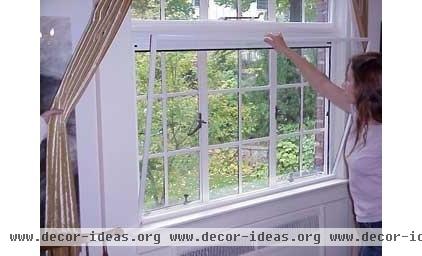
Window seals. More radical solutions are acoustical seals. A seal is a track that makes it possible to add another layer of airtight glass in front of your existing window. Once it's installed, your window won’t open anymore. Window seals are approximately $10 per linear foot.
Accoustical blankets. Acoustical blankets look like those mover's blankets in freight elevators. They cost $10 per square foot.
Triple-pane windows. A prettier solution that still involves fresh air and light: You can replace double-pane, or double-glazed, windows with triple pane, says Morrall. Installing triple-glazed windows requires the expertise of a contractor, and they typically cost 10 percent more than double-pane windows.
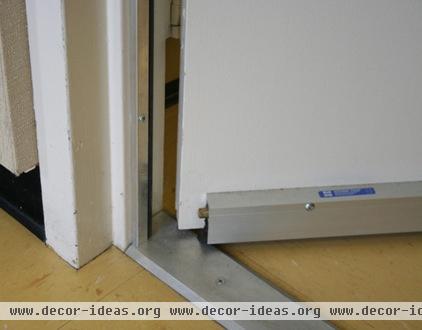
Acoustical Door Seals - $217.00 » Buy a solid-wood-core door. Boughan finds that the biggest sound culprits in home offices are doors. For the best sound blocking, install a solid-wood-core door; its mass will dampen sound. "The little crack running around the door is transmitting a lot more sound than anyone would ever dream," Boughan says, reminding us of the 1 percent rule. A door seal kit ($220 to $550) will seal gaps. A solid-wood-core door costs about $200.
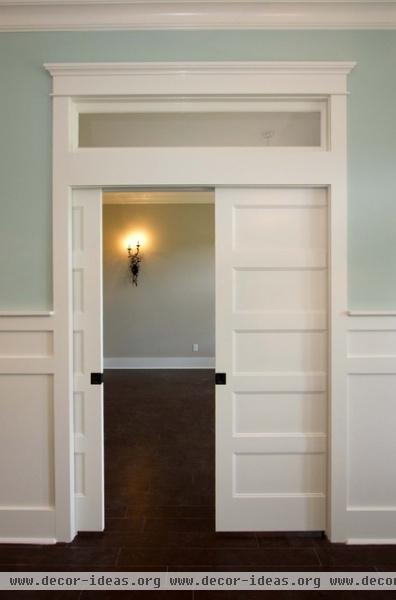
If you are in an office with pocket doors, think about moving your office to another room. They create a wall cavity that can’t be insulated, Morrall says. And there are no jambs to close the doors against.
Do you work at home? How have you created a quiet zone?












